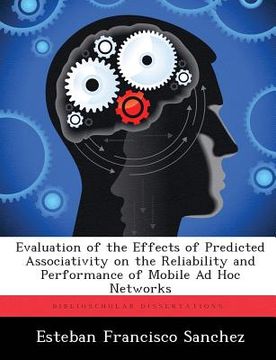Share
Evaluation of the Effects of Predicted Associativity on the Reliability and Performance of Mobile Ad Hoc Networks (in English)
Esteban Francisco Sanchez
(Author)
·
Biblioscholar
· Paperback
Evaluation of the Effects of Predicted Associativity on the Reliability and Performance of Mobile Ad Hoc Networks (in English) - Sanchez, Esteban Francisco
$ 48.80
$ 57.95
You save: $ 9.15
Choose the list to add your product or create one New List
✓ Product added successfully to the Wishlist.
Go to My WishlistsIt will be shipped from our warehouse between
Monday, July 01 and
Tuesday, July 02.
You will receive it anywhere in United States between 1 and 3 business days after shipment.
Synopsis "Evaluation of the Effects of Predicted Associativity on the Reliability and Performance of Mobile Ad Hoc Networks (in English)"
Routing in Mobile Ad Hoc Networks (MANETs) presents unique challenges not encountered in conventional networks. Limitations in bandwidth and power as well as a dynamic network topology must all be addressed in MANET routing protocols. Predicted Associativity Routing (PAR) is a custom routing protocol designed to address reliability in MANETs. By collecting associativity information on links, PAR calculates the expected lifetime of neighboring links. During route discovery, nodes use this expected lifetime, and their neighbor's connectivity to determine a residual lifetime. The routes are selected from those with the longest remaining lifetimes. Thus, PAR attempts to extend the duration routes are active, thereby improving their reliability. PAR is compared to Ad Hoc On-Demand Distance Vector Routing (AODV) using a variety of reliability and performance metrics. Despite its focus on reliability, PAR does not provide more reliable routes. Rather, AODV produces routes which last as much as three times longer than PAR. However PAR, even with shorter lasting routes, delivers more data and has greater throughput. Both protocols are affected most by the node density of the networks. Node density accounts for 48.62% of the variation in route lifetime in AODV, and 70.66% of the variation in PAR. As node density increases from 25 to 75 nodes route lifetimes are halved, while throughput increases drastically with the increased routing overhead. Furthermore, PAR increases end-to-end delay, while AODV displays better efficiency.
- 0% (0)
- 0% (0)
- 0% (0)
- 0% (0)
- 0% (0)
All books in our catalog are Original.
The book is written in English.
The binding of this edition is Paperback.
✓ Producto agregado correctamente al carro, Ir a Pagar.

